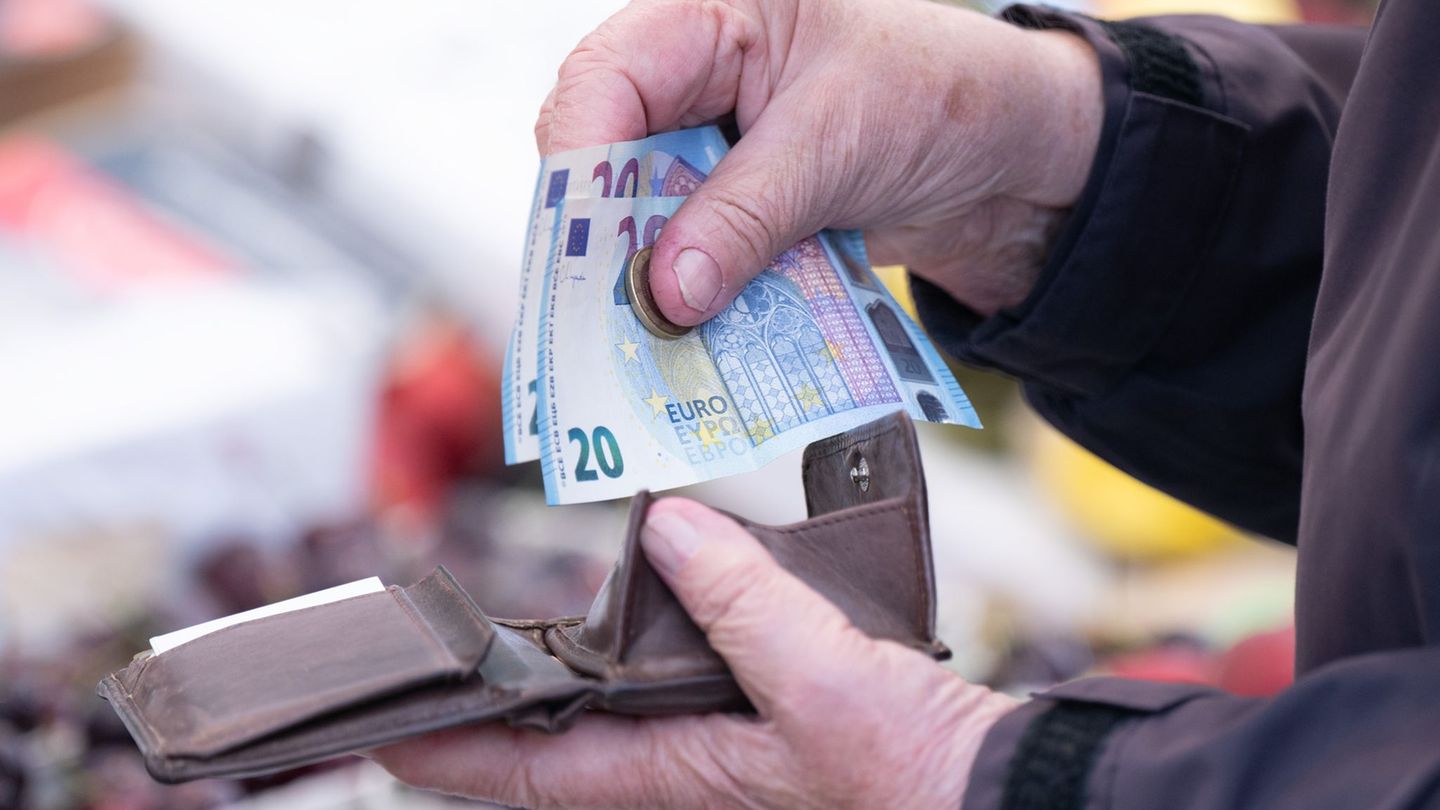Food more expensive
Inflation is just above the two percent mark
Copy the current link
Add to the memorial list
Overall, the inflation in May was within the framework. In some products, consumers have to dig deeper into their pockets. Economists see a stabilization of inflation.
Expensive food, but relief for energy prices: Overall, inflation in Germany was limited in May. As in April, consumer prices were 2.1 percent above the level of the previous year’s month, as the Federal Statistical Office calculated.
From April to May of the current year, consumer prices increased by 0.1 percent. The Wiesbaden authority confirmed preliminary figures for inflation.
The higher the rate of inflation, the lower the purchasing power of the people because they can then afford for one euro less.
Inflation rate dampens price development in energy significantly
The fact that the price increase in May was comparatively moderate in May is primarily due to the declining energy prices. Fueling and heating were 4.6 percent cheaper in May than a year earlier. In April, the price difference for the same month was 5.4 percent. “The inflation rate has stabilized, especially because of the still falling energy prices,” the President of the Federal Statistical Office, Ruth Brand.
Prices for services increase again above average
On the other hand, the above -average inflation of services persists. In May, the prices were 3.4 percent higher than a year earlier. There were particularly large price jumps in transport services (plus 11.4 percent) and insurance (plus 9.4 percent). The fact that the price surge for services is still stronger than in other countries explain economists, especially with higher wage growth in this country.
In May, the prices for food with 2.8 percent have also attracted above average. For, for example, consumers had to pay 17.6 percent more than a year earlier, chocolate was increasing by 20.2 percent. The prices for fruit increased by 7.4 percent. However, there were also clear price declines: for example with sugar (minus 27.5 percent) and olive oil (minus 17.2 percent).
Initially, only over two percent is still expected
According to economics, the topic of price jumps is not entirely over. Core inflation without the prices for energy and food that is prone to fluctuation was even higher with 2.8 percent.
“While we expect inflation rates of temporarily below two percent in the euro zone in the second half of 2025, Germany is likely to continue to stay above the two percent mark,” recently predicted Ulrike Kasten, European economist at the Deutsche-Bank Fondstaughter DWS.
Price buoyancy loses speed
A comparatively moderate inflation rate in Germany expect economists for the year as a whole. In its latest forecast of 2.1 percent, the IFO Institute will assume 2.0 percent in 2026.
The Bundesbank expects an inflation rate of 2.2 percent in Germany to be calculated using a European method (HVPI) for the current year, and it is said to be 1.5 percent in 2026. According to the Bundesbank, the core rate should also level off in around 2 percent without the prices for energy and food that is prone to fluctuation.
dpa
Source: Stern




